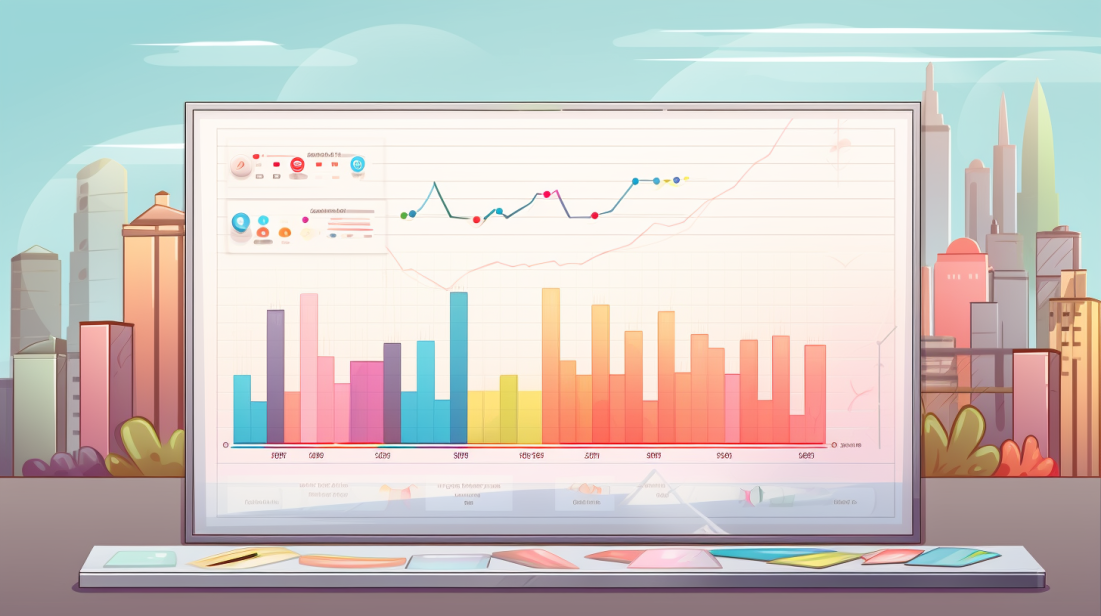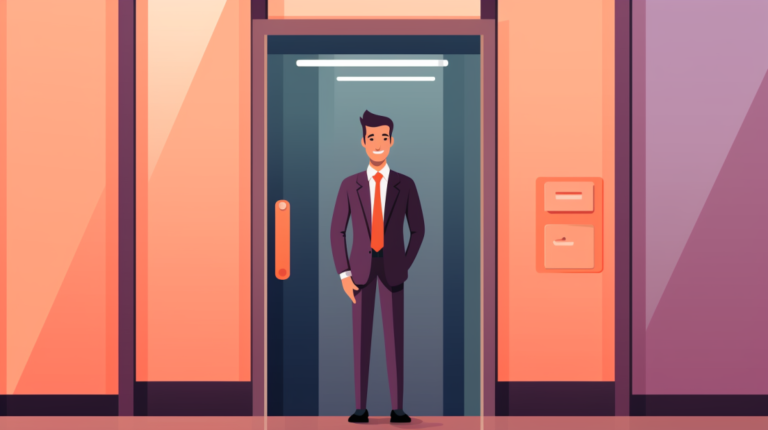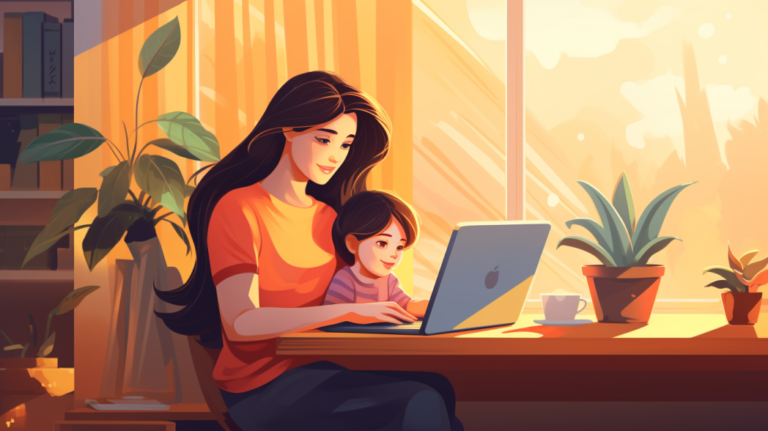Exploring the UX Design Career Path: A Comprehensive Guide

Welcome to my comprehensive guide on the UX design career path. In this article, we will explore the exciting world of user experience design, discuss the key skills required for a successful design career, and delve into the importance of building a strong design portfolio.
As the digital landscape continues to evolve, the demand for skilled UX designers has never been higher. User experience design plays a crucial role in creating intuitive and enjoyable experiences for users, whether through websites, mobile apps, or other digital interfaces. It is a multidisciplinary field that combines elements of psychology, visual design, and technology to optimize user interactions.
Key Takeaways:
- The UX design career path offers exciting opportunities for those interested in creating user-centered experiences.
- Developing essential design skills, such as interaction design and information architecture, is crucial for success in the field.
- Building a strong design portfolio is essential for showcasing expertise and securing job opportunities.
- As a UX designer, responsibilities include understanding user needs, collaborating with design teams, and creating intuitive interfaces.
- The UX design job market offers a range of opportunities with competitive salaries.
Understanding UX Design: The Art of Creating User-Centered Experiences
In order to embark on a career in UX design, it is crucial to understand the art of creating user-centered experiences. This section will delve into the core concepts and principles of UX design, including user-centered design, interaction design, information architecture, and design principles.
User-centered design is the foundation of UX design, as it focuses on designing products and services that meet the needs and expectations of the end-users. It involves conducting user research, analyzing user behavior, and incorporating user feedback throughout the design process. By empathizing with the users and understanding their goals, emotions, and preferences, UX designers can create intuitive and enjoyable experiences.
Interaction design, on the other hand, deals with how users interact with a product or service. It encompasses the design of user interfaces, navigation flows, and interactive elements. In this process, designers consider factors such as usability, accessibility, and responsiveness to ensure that users can easily and efficiently complete tasks.
Information architecture focuses on organizing and structuring information in a way that is logical and intuitive for users. It involves creating clear and concise navigation systems, categorizing content, and defining the hierarchy of information. Effective information architecture enables users to find information quickly and easily, enhancing their overall experience.
Design Principles

Design principles guide the decision-making process and help UX designers create cohesive and visually appealing experiences. Some common design principles include:
- Simplicity: Keep designs clean, intuitive, and free from unnecessary complexity.
- Consistency: Ensure that elements and interactions are consistent throughout the product.
- Hierarchy: Establish a clear visual hierarchy to guide users’ attention and understanding.
- Feedback: Provide visual and interactive feedback to inform users about their actions.
- Accessibility: Design for all users, considering factors such as color contrast, font size, and assistive technologies.
By understanding and applying these core concepts and principles, UX designers can create user-centered experiences that effectively meet the needs and expectations of the target audience.
| Concept | Definition |
|---|---|
| User-Centered Design | A design approach that prioritizes the needs and preferences of the end-users throughout the design process. |
| Interaction Design | The design of interactive elements and user interfaces to facilitate efficient and enjoyable user interactions. |
| Information Architecture | The organization and structuring of information to create logical and intuitive navigation systems and content hierarchies. |
| Design Principles | Guiding principles that inform design decisions and ensure cohesive and visually appealing experiences. |
Acquiring the Right Skills: Education and Training in UX Design
Acquiring the right skills is essential for a successful career in UX design. In this section, we will explore different education and training options, discuss the importance of design education, highlight key design skills, and address the significance of becoming proficient in design tools and software.
When it comes to education, there are several paths you can take to develop your skills as a UX designer. Many universities offer degree programs in design or related fields, which provide a solid foundation in design principles and theory. Additionally, there are specialized boot camps and online courses that offer more focused training in UX design. These options allow you to learn at your own pace and gain practical experience through hands-on projects.
While formal education is valuable, it is equally important to develop practical design skills. Some key skills that UX designers should possess include user research, prototyping, wireframing, and usability testing. These skills enable you to understand user needs, create intuitive interfaces, and ensure the effectiveness of your designs.
Beyond acquiring design skills, it is essential to become proficient in the tools and software used in the industry. Familiarity with design tools such as Sketch, Adobe XD, and Figma, along with other software like InVision and Axure, is crucial for effective collaboration and efficient workflow. Keeping up-to-date with emerging design tools and technologies will also help you stay ahead in the field.
The Impact of Design Education on Career Development

Design education plays a vital role in shaping your career as a UX designer. It provides a solid foundation in design theory, principles, and best practices. Design programs often offer opportunities for collaboration, feedback, and mentorship, which can accelerate your learning and growth. Additionally, obtaining a degree or completing a recognized program can enhance your credibility and open doors to more advanced positions and opportunities.
As you embark on your journey to become a UX designer, remember that education and training are ongoing processes. It’s essential to continuously update your skills, stay informed about industry trends, and seek opportunities for professional development. By doing so, you’ll be well-equipped to navigate the ever-evolving landscape of UX design and achieve success in your career.
| Design Skills | Design Tools |
|---|---|
| User Research | Sketch |
| Prototyping | Adobe XD |
| Wireframing | Figma |
| Usability Testing | InVision |
“Education is the passport to the future, for tomorrow belongs to those who prepare for it today.” – Malcolm X
Take the time to invest in your design education, hone your skills, and become proficient in design tools and software. Remember, the journey to becoming a successful UX designer requires continuous learning and growth, but the rewards are well worth the effort.
Building a Stellar UX Design Portfolio: Showcasing Your Expertise
Your design portfolio is your gateway to showcasing your expertise as a UX designer. In this section, we will explore the process of building a stellar UX design portfolio, discuss strategies for selecting impactful design projects, delve into the design process, and highlight effective design presentation techniques.
When building your UX design portfolio, it’s important to curate a selection of projects that demonstrate your skills, creativity, and problem-solving ability. Choose projects that showcase different aspects of your UX design expertise, such as user research, wireframing, prototyping, and usability testing. Remember, quality is more important than quantity. Select a few projects that highlight your best work rather than overwhelming your portfolio with mediocre designs.
One effective strategy is to provide context and tell a story behind each project. Explain the problem you were trying to solve, the research you conducted, and the design decisions you made along the way. This helps potential employers or clients understand your design process and the reasoning behind your design choices. Use visuals such as images, screenshots, and diagrams to illustrate your work and make it visually appealing.
When presenting your UX design projects, consider creating a table or a grid to showcase key information such as project name, client or company, your role, and the outcomes or impact of your design. This table can provide a quick overview of your portfolio and make it easier for viewers to navigate. Additionally, consider using quotes from clients or users to highlight the positive impact your designs have had.
| Project Name | Client/Company | Your Role | Outcomes/Impact |
|---|---|---|---|
| Project A | Company X | Lead UX Designer | Increased user engagement by 30% |
| Project B | Client Y | UX Researcher | Improved conversion rate by 20% |
| Project C | Startup Z | UX/UI Designer | Received positive user feedback and reviews |
In conclusion, investing time and effort into building a stellar UX design portfolio is crucial for showcasing your expertise to potential employers or clients. Select impactful design projects, provide context and tell a story behind each project, and consider using visuals and quotes to make your portfolio visually appealing and memorable. Remember, your portfolio is your chance to make a lasting impression, so make it count!
Unveiling the Role of a UX Designer: Responsibilities and Expectations

As a UX designer, you play a crucial role in creating exceptional user experiences. In this section, we will unveil the responsibilities and expectations of a UX designer, discuss the importance of collaboration within a design team, and highlight the skills needed to thrive in this role.
One of the primary responsibilities of a UX designer is to understand users’ needs and translate them into intuitive and engaging designs. This involves conducting user research, analyzing data, and creating user personas to guide the design process. By empathizing with users, UX designers can ensure that their products meet the target audience’s expectations and provide a seamless experience.
Collaboration is key in the world of UX design. Working closely with other team members, such as developers, product managers, and stakeholders, is essential to align design goals with business objectives. By fostering effective communication and collaboration, UX designers can ensure that their designs are implemented correctly and that the final product meets both user and business needs.
The Skills Needed for Success in UX Design
To excel in this role, a UX designer needs a diverse set of skills. Apart from a strong understanding of user-centered design principles, proficiency in prototyping tools, such as Sketch or Figma, is crucial for creating interactive prototypes that can be tested and iterated upon. Additionally, a UX designer must have a solid grasp of visual design principles and be capable of creating visually appealing and accessible interfaces.
| Skills | Description |
|---|---|
| User Research | Gathering insights through surveys, interviews, and data analysis to inform design decisions. |
| Information Architecture | Organizing and structuring information to ensure easy navigation and findability. |
| Interaction Design | Designing intuitive and seamless interactions between users and the product. |
| Usability Testing | Evaluating the effectiveness and efficiency of a design through user testing. |
| Collaboration | Working effectively with cross-functional teams and stakeholders to achieve design goals. |
By mastering these skills and continuously staying updated with the latest trends and tools in the field, UX designers can create exceptional user experiences that delight and retain users.
With a clear understanding of the responsibilities and expectations of a UX designer, as well as the essential skills needed for success in this field, you are well-equipped to embark on your journey towards a rewarding career in UX design. In the next section, we will explore the current job market for UX designers, including the demand for professionals in this field and the potential career opportunities that await.
Navigating the UX Design Job Market: Opportunities and Salaries

Navigating the UX design job market can be an exhilarating experience. In this section, we will explore the current demand for UX designers, discuss potential career opportunities, and shed light on the expected salaries in this field.
As businesses continue to prioritize user experience, the demand for skilled UX designers is on the rise. Companies across various industries are recognizing the value of creating seamless and intuitive user interfaces, leading to a growing need for professionals who can deliver exceptional user-centered designs. Whether you are just starting your career or looking to make a transition, the UX design job market offers numerous opportunities.
When it comes to career opportunities, UX designers have a wide range of options. From working in-house for large corporations to joining design agencies or freelancing, the possibilities are vast. You could find yourself designing user interfaces for mobile apps, websites, or even virtual reality experiences. The diverse nature of the field allows for specialization in areas such as interaction design, information architecture, or user research.
While career opportunities are important, it’s also crucial to consider the financial aspect. The average salary for UX designers varies depending on factors such as experience, location, and industry. According to recent data, the median annual salary for UX designers in the United States is around $90,000. However, experienced designers in high-demand markets can earn well above six figures. It’s worth noting that salaries can also be influenced by additional factors such as company size and benefits offered.
UX Design Salaries by Experience Level
| Experience Level | Salary Range |
|---|---|
| Entry-level | $55,000 – $75,000 |
| Mid-level | $75,000 – $110,000 |
| Senior-level | $110,000+ |
When considering a career in UX design, it’s important to stay updated on industry trends and continually enhance your skills. The demand for UX designers is projected to continue growing as technology evolves and user expectations increase. By embracing opportunities for professional development, networking with other professionals, and staying curious about emerging design trends, you can position yourself for long-term success in the field.
Advancing your UX design career requires continuous learning and growth. In this section, I will provide you with tips and strategies to help you excel in your profession, including seeking feedback and mentorship, building a strong network, and fostering lifelong learning.
Seeking Feedback and Mentorship
One of the most effective ways to improve your skills as a UX designer is to seek feedback from peers and industry experts. Constructive criticism can provide valuable insights and help you identify areas for improvement in your designs. Consider joining design communities or attending design conferences where you can showcase your work and receive feedback from professionals in the field.
Mentorship is another valuable resource for career advancement. Finding an experienced UX designer who can guide you and offer advice can greatly accelerate your learning and help you navigate challenges in your career. Reach out to professionals you admire and ask if they would be willing to mentor you or provide guidance on specific projects.
“Seeking feedback and mentorship can greatly accelerate your learning and help you navigate challenges in your career.”
Building a Strong Network
Building a strong professional network is essential for advancing your UX design career. Engaging with other designers, attending events, and participating in design communities can open doors to new opportunities and collaborations. Networking can also provide valuable insights into industry trends, best practices, and potential job opportunities.
Consider joining online design communities, such as forums or social media groups, where you can connect with other UX designers and share ideas. Attending design conferences and workshops is another great way to network and learn from industry leaders. Remember to be proactive and genuine in your interactions, as building meaningful connections can have a significant impact on your career.
Fostering Lifelong Learning

As a UX designer, it’s crucial to stay updated with the latest industry trends, tools, and techniques. Continuously investing in your professional development will not only enhance your skills but also make you a more valuable asset to employers. Stay curious and seek out opportunities for learning, such as online courses, workshops, and industry publications.
Additionally, consider expanding your skill set beyond UX design. Familiarize yourself with related fields like graphic design, psychology, and marketing. This interdisciplinary knowledge can help you better understand user behavior and create more impactful designs.
In conclusion, advancing your UX design career requires a proactive approach to learning and growth. Seek feedback, find mentors, build a strong network, and foster a mindset of lifelong learning. By implementing these strategies, you can take your career to new heights and become a successful UX designer.
The field of UX design is constantly evolving, and it’s important to stay up to date with the latest trends and innovations. In this section, we will delve into the future of UX design, explore emerging trends, discuss the importance of design innovation, creativity, and aesthetics.
One of the key trends in UX design is the integration of voice technology and artificial intelligence (AI). Voice assistants such as Amazon Alexa and Google Assistant have become increasingly popular, and designers are now focusing on creating seamless and intuitive voice user interfaces. This involves understanding natural language processing and designing conversational interfaces that mimic human interactions. As AI continues to advance, designers will also need to consider ethical implications and ensure that AI-powered systems are designed to be transparent, accountable, and unbiased.
| Trends | Examples |
|---|---|
| Microinteractions | Facebook’s “Like” button |
| Augmented Reality (AR) | Snapchat filters |
| Minimalistic Design | Apple’s clean and simple UI |
Another trend in UX design is the increasing focus on accessibility. Designers are recognizing the importance of creating inclusive experiences that cater to users with disabilities. This includes designing for screen readers, incorporating color contrast for visually impaired users, and ensuring that all users can easily navigate and interact with digital products. By prioritizing accessibility, designers can create experiences that are not only usable but also considerate and empowering for all users.
“Design is not just what it looks like and feels like. Design is how it works.” – Steve Jobs
Importance of Design Aesthetics

Design aesthetics play a crucial role in UX design. Aesthetics encompass the visual appeal, emotional resonance, and overall user experience of a product. In the future, designers will continue to push the boundaries of creativity and aesthetics, exploring new design styles, color schemes, and visual elements. By prioritizing aesthetics, designers can create products that not only function well but also evoke positive emotions and delight users.
In conclusion, staying ahead of the curve in UX design requires an understanding of emerging trends and a willingness to embrace innovation. By integrating voice technology, prioritizing accessibility, and focusing on design aesthetics, designers can create experiences that are intuitive, inclusive, and visually appealing. The future of UX design is exciting, and by remaining adaptable and continuously learning, designers can shape the digital experiences of tomorrow.
Conclusion: Your Path to Success in UX Design
Congratulations on reaching the end of this comprehensive guide on the UX design career path. In conclusion, we have explored the various aspects of a career in UX design and discussed the potential for success, as well as the challenges and rewards that come with it.
Throughout this guide, we have highlighted the importance of developing the necessary skills and knowledge to excel in the field of user experience design. From understanding the core principles of user-centered design to building a stellar portfolio that showcases your expertise, we have covered the essential steps to kickstart your journey towards a successful UX design career.
While the path to success in UX design may present certain challenges, such as staying updated with the latest design trends and navigating a competitive job market, the rewards are plentiful. As a UX designer, you have the opportunity to shape the digital landscape, create meaningful experiences for users, and contribute to the success of businesses and organizations.
As you embark on your own UX design career, remember to seek feedback and mentorship to constantly improve your skills. Building a strong network of professionals in the industry can also open doors to exciting opportunities and collaborations. Embrace the future of UX design, stay curious, and continue to hone your creativity and aesthetic sensibilities.
Are the Skills and Tips for Freelancing applicable in the UX Design Career Path?
When venturing into a UX design career path, the skills and tips for freelancing as a career can prove invaluable. The ability to manage time effectively, communicate clearly with clients, and stay organized are all transferable skills that can contribute to success in the UX design field. Additionally, freelancers often need to think creatively and problem-solve efficiently, which aligns perfectly with the demands of UX design projects. By applying the tips gained from freelancing experience, aspiring UX designers can enhance their abilities and excel in their chosen career path.
FAQ
Q: What is UX design?
A: UX design, short for user experience design, is the process of designing digital products or services with a focus on creating intuitive and enjoyable experiences for users. It involves understanding user needs, conducting research, creating wireframes and prototypes, and testing and iterating on designs.
Q: What skills do I need to become a UX designer?
A: To become a UX designer, you will need a combination of technical and soft skills. Technical skills include proficiency in design tools, coding languages, and user research methods. Soft skills such as communication, empathy, and problem-solving are also essential for understanding user needs and collaborating with team members.
Q: How can I build a UX design portfolio?
A: Building a UX design portfolio involves selecting and showcasing your best design projects. It should demonstrate your design process, problem-solving abilities, and the impact of your work. Include case studies with clear explanations of your design decisions, the challenges you faced, and the results you achieved.
Q: What are the responsibilities of a UX designer?
A: The responsibilities of a UX designer vary depending on the organization and project. Generally, UX designers are responsible for conducting user research, creating wireframes and prototypes, conducting usability testing, and collaborating with other team members such as developers and product managers to ensure a seamless user experience.
Q: What are the job opportunities and expected salaries for UX designers?
A: The demand for UX designers is high, and job opportunities exist in various industries and organizations. Salaries for UX designers can vary based on experience, location, and company size. Entry-level positions typically range from $50,000 to $70,000 per year, while experienced designers can earn upwards of $100,000 per year.
Q: How can I advance my UX design career?
A: To advance your UX design career, seek feedback on your work, collaborate with experienced designers for mentorship, and continuously improve your skills. Creating a strong professional network, attending design conferences, and staying updated on industry trends and innovations can also help in advancing your career.
Q: What are the emerging trends in UX design?
A: Some emerging trends in UX design include voice user interfaces, virtual reality and augmented reality experiences, motion design, and conversational interfaces. It’s important for UX designers to stay updated on these trends and continually adapt their skills to meet the evolving needs of users.
Q: What are the challenges and rewards of a career in UX design?
A: Challenges in a career in UX design can include tight deadlines, conflicting stakeholder opinions, and the need to continuously learn and adapt to new technologies and design methodologies. However, the rewards of a UX design career include the ability to positively impact user experiences, collaborate with diverse teams, and work on innovative projects that have the potential to make a difference in people’s lives.






